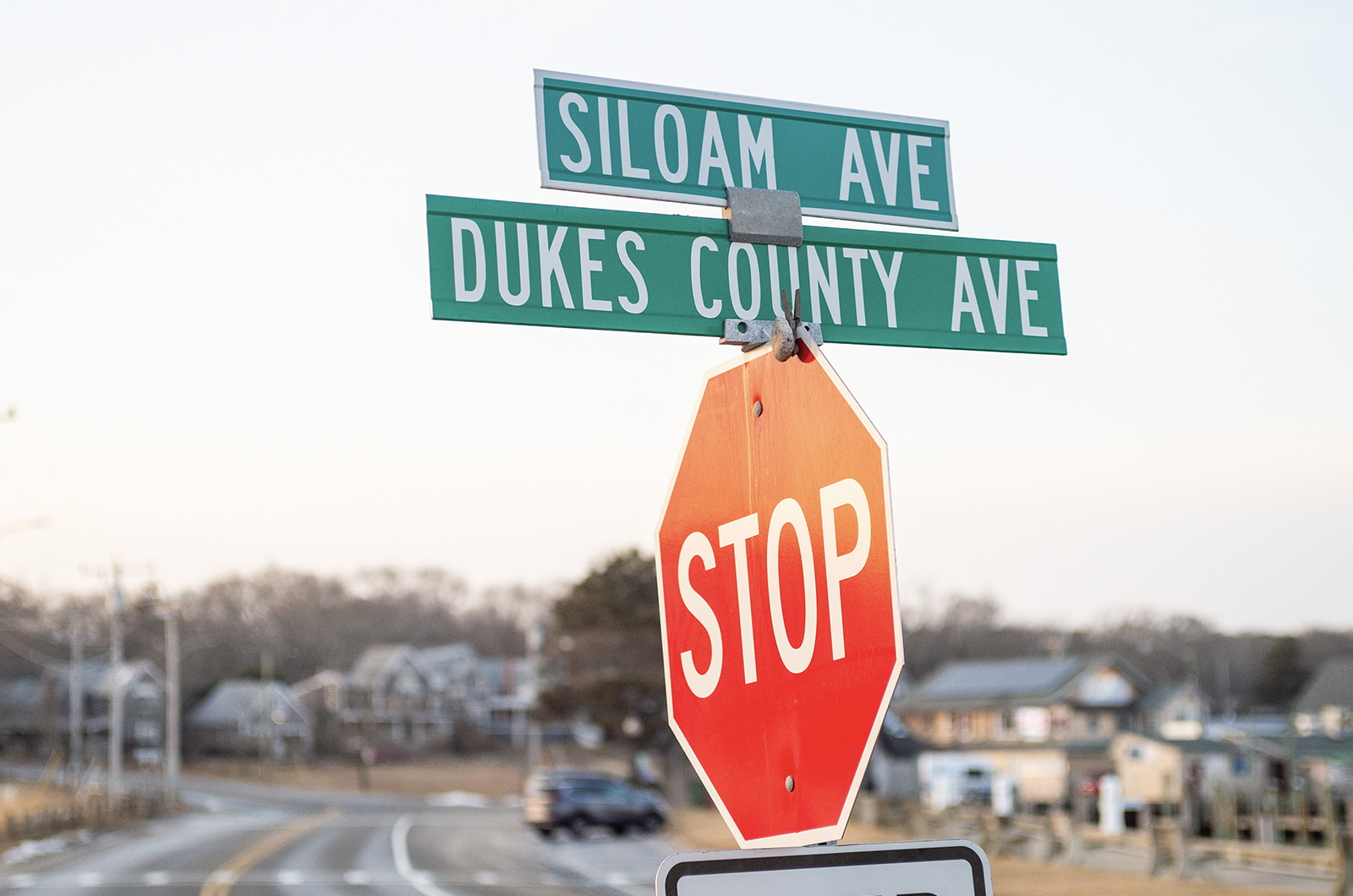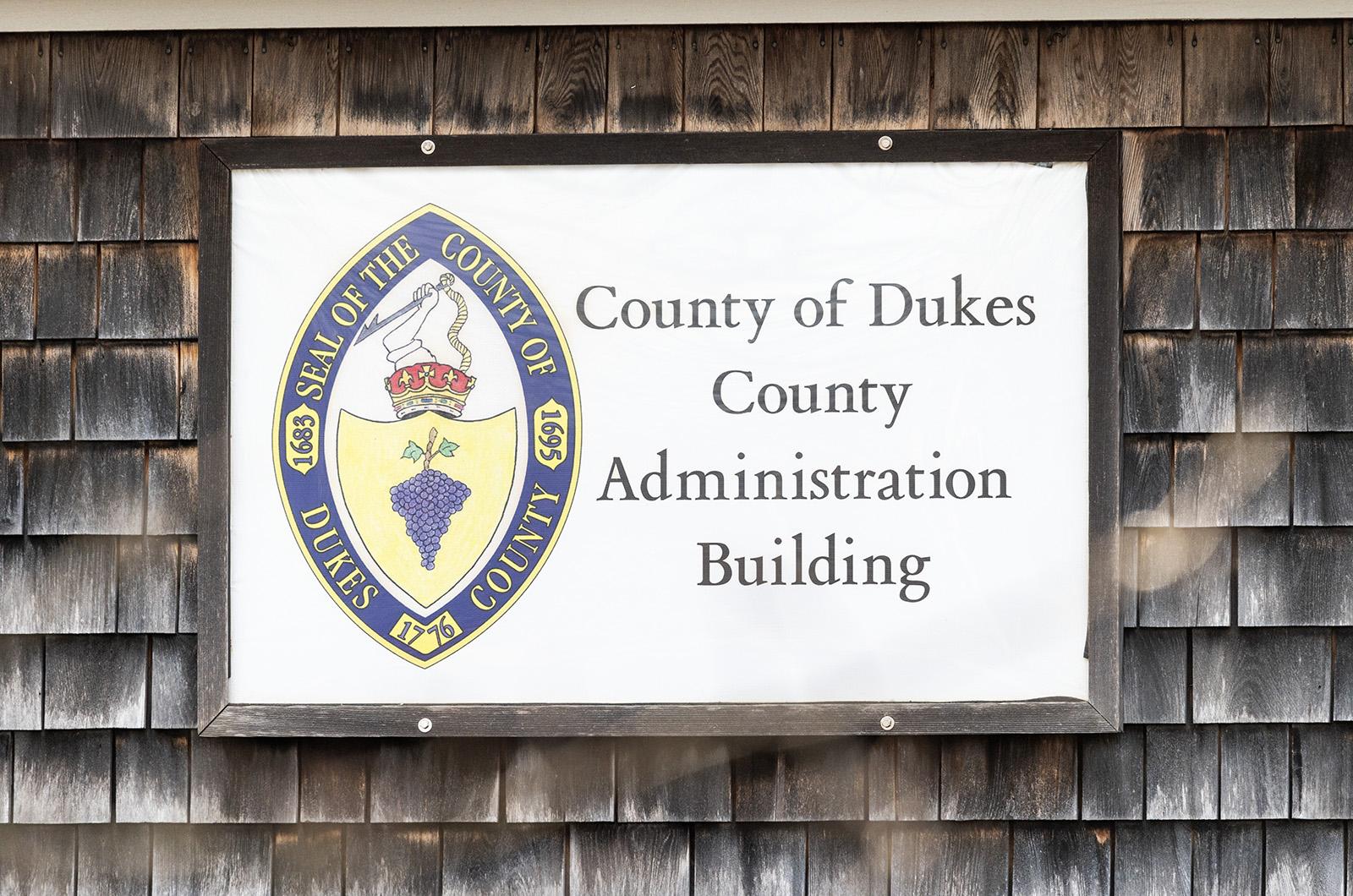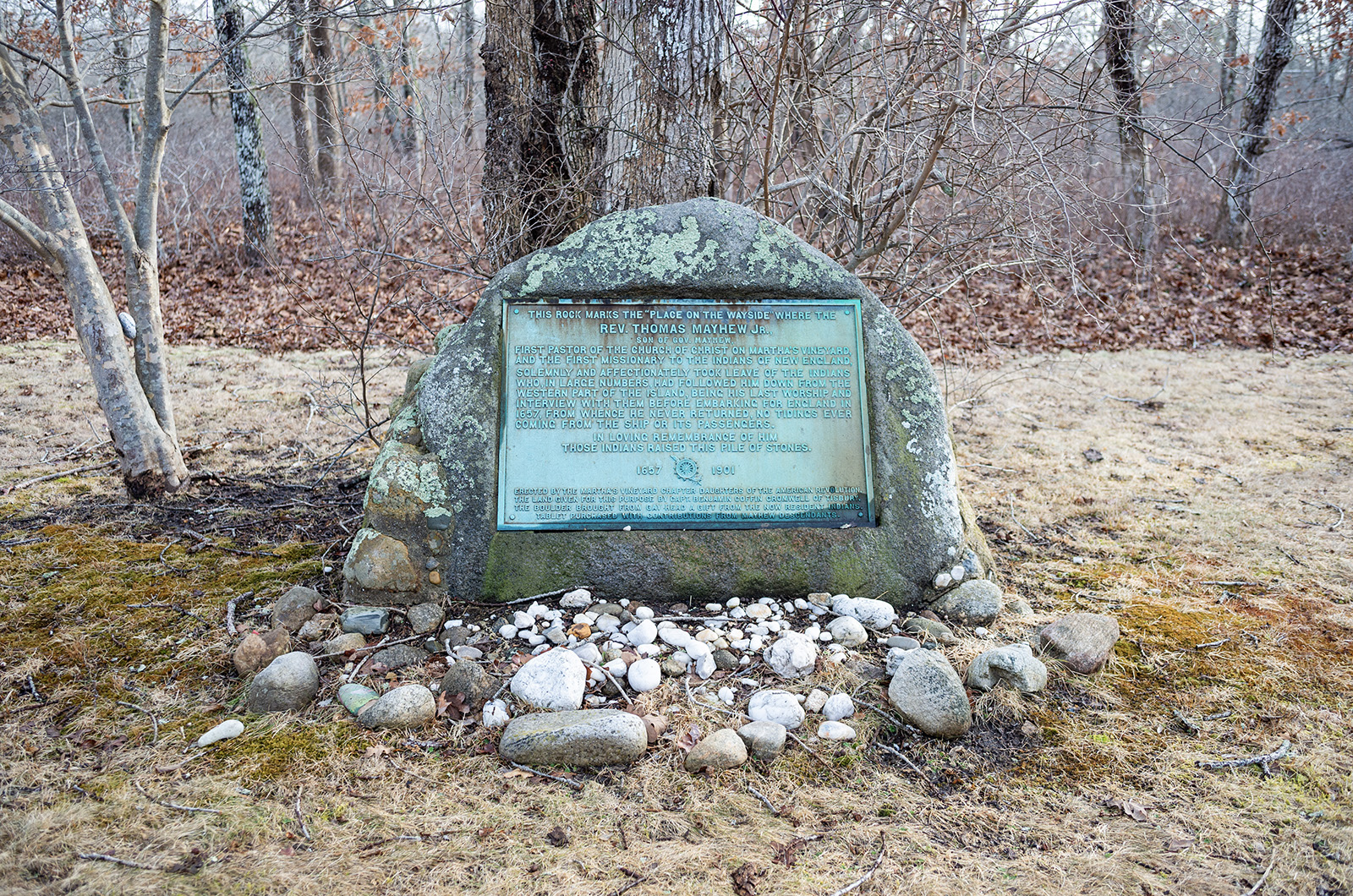While much of the Vineyard’s history is widely known, from the first voyages of Gosnold to the filming of Jaws, a brief period in the 1600s is largely forgotten, perhaps paved over for its briefness and lack of lasting effects.
Though the idea is far-fetched now, the Vineyard was, for a time, part of New York, and if the winds of power had not shifted northward, the Island could have been awash in New York Yankees hats and Bronx cheers, rather than a refuge for New England clam chowder and Commonwealth-style town meetings.
“I think it’s mostly a surprise to people,” Bow Van Riper, the historian at the Martha’s Vineyard Museum, said of New York’s oversight of the Vineyard, which ran from 1664 to 1691.
This chapter in the Vineyard’s life began when Thomas Mayhew arrived in Massachusetts from England in 1630. In 1641, he bought a charter to settle the Vineyard and other islands east of Long Island, N.Y.
The first Mayhews arrived on the Island in 1643, largely settling in what is now Edgartown. Thomas Mayhew would go on to become the “governor for life” of Martha’s Vineyard, and all of the early top officials in the fledgling fiefdom were Mayhews or their allies. The family “bought” up land from the Wampanoag people, essentially creating their own aristocracy on the Island for years to come.
Martha’s Vineyard was a remote outpost at the time. Despite being plugged into the ocean trade routes, whaling had yet to take hold, nor any other industry that would eventually put it on the map, such as brickyards.
“It was very much more small-scale agriculture and inshore fishing,” said Mr. Van Riper. “That’s it.”
The remote nature and lack of major economy let the Mayhews rule with impunity as the settlement started to find its footing.
“The Vineyard . . . was ignored by the colonial governors and he liked that,” wrote historian Arthur R. Railton in his book The History of Martha’s Vineyard.
Two decades later, the Vineyard would change hands, though not through any choice of the Mayhews, other settlers or the Wampanoag people. In 1664, the English took what is now Manhattan from the Dutch, and King Charles II gave New York, New Jersey, the Vineyard and other eastward islands to his brother, the Duke of York.
The change didn’t come with large fanfare and, in fact, the Mayhews at one point had to clarify which colony they had to turn to with their problems. The Island only really bubbled up on New York’s radar after a pair of ships ran aground along the Island’s shores in the following years.
Mr. Railton wrote that when the new governor of New York, Francis Lovelace, learned of the second grounding, where Native Americans took 40 hogsheads of rum and other items from the ship, he demanded an explanation from Mayhew.
Mayhew responded by asking the governor who was actually in charge of the Island, and whether it was governed by New York or Massachusetts. Lovelace replied New York, and demanded Mayhew come to Fort James, now the lower end of Manhattan, to talk over the governance of the Vineyard.
The discussion proved fruitful for the Mayhews. Thomas Mayhew Sr. made friends with Lovelace, which aided the family in amassing even more power — a fact that would eventually prove to be problematic for some democracy-seeking Islanders.
Governor Lovelace made Mayhew “governor for life” of Martha’s Vineyard, and allowed for the creation of The Manor of Tisbury, a designation in the English tradition that allowed Mayhew to charge landowners rent for what are parts of present day Chilmark and West Tisbury.
The flip-flop from Massachusetts to New York wasn’t really something of note in the lives of the 40 or so settler families who were trying to make a life on the Vineyard, at least initially.
“It didn’t make an enormous amount of difference, day-to-day, for Vineyarders,” Mr. Van Riper said.
But for the Mayhew clan, the switch leaned in their favor. New York had much bigger issues to deal with, thus giving the Mayhew family autonomy to run the Island how it pleased.
“Thomas Mayhew Sr. thought this was wonderful,” Mr. Van Riper said. “Because it gave him a chance to achieve what he wanted, a chance to be a big fish in the pond.”
Just a few years later, though, things became complicated.
In 1673, the Dutch recaptured New York from the English, leaving some Vineyarders wondering if the English-bestowed title of “governor for life” and autocratic rule of the Mayhews had firm ground to stand on.

More than half of the settler families raised grievances over the Mayhew rule and questioned its legal standing. Mr. Railton laid out their issues as follows: “Taxes were unfair, they said, because taxpayers had no say in how their money was spent or in how much they had to pay. Officeholders were exempt from taxation, and as most were Mayhews, the tax burden fell mainly on non-Mayhews.”
Similarly, court officials on the Island were almost all Mayhews, making it hard for non-Mayhews to get fair trials, the Vineyard settlers contended.
The Island’s political upheaval was led by Thomas Burchard, an ousted Mayhew-appointed clerk, and Simon Athearn, who came to the Vineyard as an indentured servant to one of the wealthiest Vineyard settlers.
They petitioned for the Vineyard to rejoin Massachusetts, preferring Massachusetts’ democratic leanings and geographic proximity. The petition went nowhere and by the next year, the English had regained control over New York, effectively quashing the rebellion.
At this point, Mayhew was not happy with the rabble-rousers on the Vineyard, and Burchard and Athearn were both drawn up on charges. Athearn, seeking to avoid a trial in New York, took a plea deal, while also continuing to decry the Mayhews rule. But the squabbles of Vineyard farmers and officials seemed trivial to the colonial powers when the King Philip’s War broke out on the mainland.
The war largely left the Vineyard untouched and the Mayhew reign continued. In 1662, Thomas Mayhew Sr. died at age 90, and his grandson Matthew took over most of the political control on the Island. He never gained the lofty title of governor, instead being named chief justice by New York Governor Andros.
In 1683, Governor Thomas Dongan took over in New York, and called on elected representatives from the Vineyard and Nantucket to be sent to New York to be involved in one of the first steps of creating a representative government.
It was at this time that the royal counties were named, and Dukes County has stuck ever since, despite one effort in 1700 to change the name to Mayhew County.
Changes thousands of miles away by distant powers would soon shift the Vineyard again. When King James abdicated the throne in 1688, his daughter Mary and her husband William took over. In the royal shuffle, the Vineyard and Nantucket were moved back to the jurisdiction of Massachusetts by 1691.
The change took some getting used to for the people in power on Martha’s Vineyard. Mr. Railton wrote that Matthew Mayhew refused to recognize the authority of Massachusetts, and at one point would not take the chief magistrate’s oath to uphold the laws of Massachusetts, preferring the distant and indifferent New York.
After some convincing, the Mayhews finally relented and accepted Massachusetts’ oversight, thus ending the Vineyard’s New York affiliation.
Mr. Van Riper noted that not much remains from the Island’s brief period of New York rule, although the hordes of tourists from the Empire State that flood the Island every summer do have an effect, he joked.
The start of the colony did take a toll on the Wampanoag population, which, by 1700 only counted 1,000 people, about a third of what it was when the English arrived 60 years earlier.
“The white man had taken much of their land and his diseases had taken many of their lives,” Mr. Railton wrote.
One of the only remnants of New York that has stood the test of time is the Island’s county name. Dukes County, for a time, was one of New York’s royal counties, falling in line with New York’s Kings, Queens and Dutchess counties, all of which still exist.
Now it stands out for its odd technical name: County of Dukes County, a mish-match of the existing New York-bestowed name Dukes County and the Massachusetts formula of naming counties (for example, the County of Essex).
Mr. Van Riper added that this era on the Vineyard mirrored issues off-Island. Despite the short tenure of the New York rule, the time period stoked a desire for local rule rather than oversight from distant and disinterested parties, whether they be located in Manhattanir or London. It was the same attitude that sparked the American Revolution.
“You’re seeing in 1691 on the Vineyard, the start of something that will be very big and very pivotal,” Mr. Van Riper said. “This is, in the context of the Island, the first step on the very long road to the revolution and independence from Britain.”








Comments (13)
Comments
Comment policy »